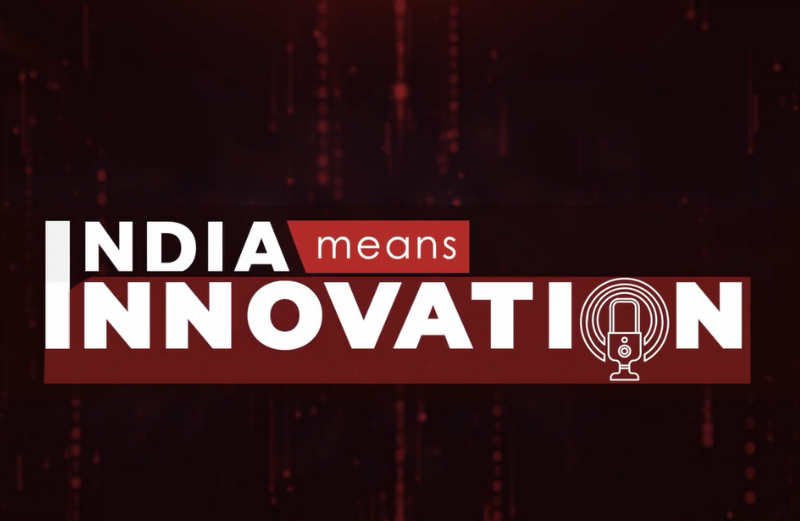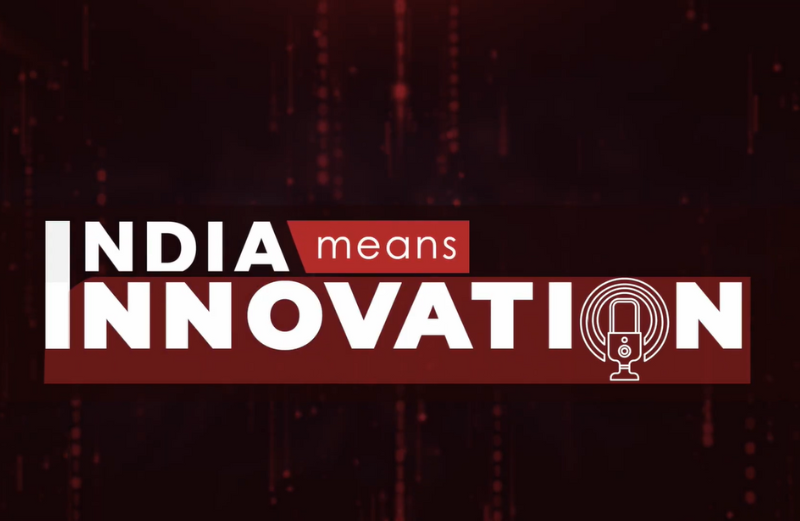Transcript Disclaimer: This transcript has been generated using automated tools and reviewed by a human. However, some errors may still be present. For complete accuracy, please refer to the original audio.
00:00:07 GOVIND ETHIRAJ: Thank you so much Piyush for joining me. So we're going to go on a little journey and your digital journey and DBS's digital journey in the last decade or so. So tell us about where you started, thinking about technology in a very applied sense and then we'll talk about how it fits into the context of artificial intelligence and what are the kind of problems it's going to solve.
00:00:25 PIYUSH GUPTA: Well, you know we actually need to start with my own background, so I used to work with Citibank and in the late 90s I started fooling around with a lot of the first e-commerce platforms in Asia. In 2000 I quit banking for a year and set up my own .com in Delhi actually with Hindustan Times people. So I had some affinity and some.
00:00:46 GOVIND ETHIRAJ: What was it called?
00:00:47 PIYUSH GUPTA: Go4i.com—so we sold HD online. That’s what we created at the time. It didn’t work, by the way—more of a dot-bomb than a dot-com. But it gave me some background.
In 2012, two or three significant things happened. We had been trying to grow our business across the region through traditional brick-and-mortar methods, but I found SME and consumer banking very hard to scale. At the same time, the financial services value chain was beginning to get unbundled globally.
But perhaps most importantly, I had a seminal meeting with Jack Ma and his team at Alibaba, which made me realize they were redefining how financial services operate. They had 3 million SME lending customers and 300 million consumer borrowers. They were raising money through Yu’e Bao, moving money seamlessly, selling insurance—and all of it with zero branches, zero salespeople, and zero paper. In every sense, they were a bank.
That meeting made me and my CEO step back and ask: If tech companies can do it, why can’t we? Technology is open-source and readily available, and we had domain knowledge. So, we could leapfrog. We were also fortunate that we hadn’t been significantly impacted by the global financial crisis like many Western banks. Because of that, we could focus on the future instead of being stuck in the past.
By 2013–2014, we were early in the transformation game. We launched a structured change program built around three pillars.
The first was a complete technology re-architecture. Early on, we transitioned to microservices and an API-centric technology model. We gave ourselves four years to overhaul our infrastructure—moving from mainframes to x86 server farms, creating our own virtual private cloud, and modernizing our entire tech stack.
The second pillar—one that is especially relevant to this year’s Nasscom event—was customer obsession. Not just being customer-centric, but truly obsessed with the customer experience. As I told my team at the time, you could argue that Uber became Uber not just because of its technology but because it reimagined the job to be done. Similarly, Airbnb didn’t just introduce tech into hospitality—it completely rethought the experience. If we wanted technology to make a real difference, we had to understand the human agenda behind it. So, we doubled down on customer journey mapping and an outside-in approach to leverage technology in a fundamentally different way.
The third pillar was cultural transformation. If we wanted to compete with the Googles, Amazons, and Alibabas of the world, we had to start believing we were a tech company. Our people needed to feel like they were driving change, not just having change happen to them. When you instill that mindset, you get far superior outcomes.
We started this journey and, along the way, got a little lucky. By 2016, we were recognized as the world’s best digital bank, and since then, we’ve consistently held that title for several years in a row.
00:04:05 GOVIND ETHIRAJ: So you know, you talk about Alibaba and you talked about the fact that, you know, they have so many millions or hundreds of millions of customers, they have vendors and there's money flowing back and forth, but at the end of the day, they're a commerce, e commerce company. Now you are a bank. Your job is also to keep deposits of your customers, large and small, safe, and answer to regulators. So how do these, do these two worlds collide at all in the ambition to be more like a tech company versus the, the traditional responsibility?
00:04:34 PIYUSH GUPTA: That's a really good question, Govind. If you ask me, when I look back, what has been the biggest challenge? It has always been about finding the right balance—between the fiduciary role we play as a bank in a highly regulated industry and, on the other hand, trying to operate like a tech company while staying relevant in the context of the customer.
I'll start with a fundamental principle: nobody wakes up in the morning saying, I want to go banking. People want to do different things with their lives. You don’t need a mortgage; you want to buy a house. You don’t need a credit card; you want to pay for a meal. If you begin with this first principle—that people have real-world needs—then the challenge becomes figuring out how to embed banking products seamlessly into what they want to do. You start thinking like an e-commerce company.
Early on, we began saying that our role was to make DBS invisible—to embed ourselves seamlessly. Today, this concept is called embedded finance, but we were working toward it long before it had a name. I wanted us to be the Intel Inside of banking. As we moved in that direction, we had to navigate two key challenges: regulation and trust.
On the regulatory front, we were fortunate. Regulators in Asia have generally been progressive, willing to lean in, and open to working with banks to find constructive solutions that allow the industry to evolve. Compared to the regulatory approach in the West, Asia’s regulators have been more willing to experiment with sandboxes and new technologies, ensuring innovation while maintaining oversight. Many of our early experiments were conducted in collaboration with regulators. For example, in Singapore—where we are headquartered—the Monetary Authority of Singapore (MAS) created the Financial Centre Advisory Panel in 2015-16. This brought together e-payment companies, banks, and regulators every six months to explore how technology could be leveraged differently.
However, the bigger challenge was trust—and trust has many dimensions. First, there’s resiliency. Customers today have expectations shaped by companies like Google and Amazon. They want banking to be available 24/7, instantly, without disruptions. We learned this lesson the hard way. When we moved to a new architecture, we underestimated the operational complexity involved, which forced us to course-correct. Ensuring resiliency is critical. Beyond that, cybersecurity is an ever-growing concern. In the past, fraud affected one customer at a time. Today, a breach can impact a million customers at once. This has forced us to think rigorously about cybersecurity—perimeter defenses, firewalls, and, more importantly, the assumption that breaches will happen. We now operate with the mindset that inside is the new outside—assuming an intruder is already inside the system and focusing on detecting and mitigating threats in real time. We use AI, micro-segmentation, and advanced data analytics to safeguard customer trust.
And then, there’s the evolving threat of scams and fraud. With AI-driven deepfakes and increasingly sophisticated fraud techniques, bad actors are constantly finding new ways to exploit technology. The only way to counter this is by using technology to police technology. Human oversight alone isn’t enough. It’s a constant cat-and-mouse game, and if we don’t build our systems with this in mind, we risk losing the battle.
00:08:35 GOVIND ETHIRAJ: Okay, so I'm going to come to that deep fake and those challenges in a bit. But, but tell us about how you look at consumers in terms of the way you're trying to understand them today. And since we are in a technology conversation using, let's say, the kind of AI that is available and to what extent does it even help you do that? And the second sort of supplementary question, if I can add to that, you work in 19 countries, so are customers different in. Completely different, somewhat similar. How do you mine the similarities and then work on the dissimilarities as you do this?
00:09:02 PIYUSH GUPTA: All right, so first of all, this whole idea of embedded finance and the ability to predict what a customer truly wants—AI is a massive game changer. We embarked on our AI journey over a decade ago. In fact, we were the global pilot for IBM when they launched Watson. At that time, Watson was a global pilot for wealth management, but it didn’t work as well as expected. I was getting accuracy rates of 85–87%, which wasn’t good enough to take to market. NLP hadn’t yet advanced to the level we needed. Unstructured PDFs, graphs—you couldn’t process that kind of data effectively.
Fast forward a few years, and by 2017, we began scaling our predictive AI in a big way. We built our data layers, developed numerous data access protocols, and started creating models. We soon found that AI was delivering significantly superior outcomes, both in predicting customer needs and enhancing the servicing and sales processes.
Let me give you an example. As human relationship managers, we have over 20 million customers but only a limited number of RMs. Naturally, they can only maintain personal relationships with a small fraction of customers, leaving the rest largely faceless. But with AI, they are no longer faceless. AI enables us to interact with each customer as a "segment of one" in a highly personalized way. The amount of data we have on customers is massive. For instance, I can predict with a high degree of accuracy which restaurant you’re likely to visit next month based on your data patterns. Individually, no human could do this—but AI can.
So, we started building AI models at scale. Today, we have 1,600 models driving the bank across 400 different use cases. We send out 50 million nudges in Singapore alone, including 5 million every month, helping customers make better financial decisions. These nudges might alert you to a potential duplicate payment, highlight an unusually high electricity bill, or suggest buying gold based on your reading habits. All of this is powered by our AI engines. The results? Higher engagement rates, increased customer satisfaction, and improved responses to marketing nudges.
Three to four years ago, we started A/B testing to quantify AI's economic impact. We ran control samples without AI and compared them with AI-powered models. This year alone, AI will generate over a billion dollars in economic delta.
Without a doubt, AI has been a game changer in predicting customer needs and facilitating better financial decisions. And that’s even before generative AI. I believe GenAI turbocharges this to an entirely new level.
00:11:44 GOVIND ETHIRAJ: Right, so you're also saying therefore that customers have a great degree of similarity. I guess we know that, but from your.
00:11:51 PIYUSH GUPTA: That was the second part of your question. So, you know, it's interesting. I think our 19 countries are mostly in Asia, and I find there is a lot of cultural similarity within the region. The big difference between Western liberal thought and Asian thought lies in the primacy of the individual and data privacy relative to the role of community and society.
I'll share an interesting anecdote. When COVID happened, on the very first day we had our first case in February, my data analytics team conducted the usual network analysis. Using door tab data and QR codes, we were able to identify people who might have been in contact with the infected individual—and our employees loved it. I even wrote an op-ed in the Financial Times about how we leveraged data and analytics to determine who might be at risk. However, I was heavily criticized in the Western press because, for them, the idea of using employee data was unconscionable. In contrast, all my employees in Asia appreciated it because they saw it as a community service.
That difference is real. In Asia—whether it's the Chinese, Indians, or Southeast Asians—there is a broader acceptance of using data constructively, with safeguards, to achieve beneficial outcomes. As a result, we have been able to successfully transfer our strategies across most of our countries.
00:13:11 GOVIND ETHIRAJ: So as you apply AI now to, let's say real world consumer needs, perceived needs, because you're obviously trying to pull them out even before they think of them, what are some of the interesting use cases and how is it scaling up? And then I'll come to India as well.
00:13:25 PIYUSH GUPTA: Well, you know, if you go back to general AI—like I said—take the mortgage journey, right? Typically, people come to us for a home loan well after they’ve chosen a house, after they’ve made their decision, and then they shop for mortgage rates. But with embedded finance, you can start engaging with the customer six months ahead of time. Why? Because your AI-driven engine can start detecting early signals that a customer might be interested in buying a house based on various data points it analyzes.
This allows you to engage with the customer much earlier. AI engines can also determine what the customer is most likely to respond to—whether it’s a service that helps them find a house or a better mortgage product. AI decides when to approach the customer, what kind of offer to present, and how to engage them. This significantly transforms customer relationships and engagement.
For example, today, with Gen AI, we’re seeing a major shift. Because it can handle unstructured data—reading, synthesizing, and generating insights far better than humans—the impact is already proving invaluable. In our call centers, where customers used to rely on chatbots for years, Gen AI has elevated engagement to a whole new level. Customers are now much more comfortable asking questions, and with an enterprise knowledge base in the background, the Gen AI tool engages with them more effectively than our physical agents ever could. As a result, customer satisfaction and engagement levels are improving dramatically.
Beyond customer interactions, we’re leveraging AI internally as well. We use it for hiring through a system called Jobs Intelligence Maestro, which predicts the right candidates—whether for sales roles or tech positions. We also use AI for onboarding new customers, and our underwriting process has evolved beyond just financial statements and cash flows. Now, we can predict which customers to bring on, allowing us to reach individuals we previously wouldn’t have been able to serve.
These are just a few examples of how AI is fundamentally reshaping the way we operate.
00:15:34 GOVIND ETHIRAJ: So is AI then to that extent resolving business challenges or improving your business outcomes better than perhaps what was this thing? Or is it to expectation or it's still there some gap?
00:15:47 PIYUSH GUPTA: No, no. So it's without a doubt resolving challenges much better. But there is still a long way to go. So when I look even at the predictive AI, I tell people if you look at a scale of 10, we think relative to the banking universe, we are top quartile. But compared to what a Facebook does or Netflix does, we are three and these guys are at eight or nine. So there's a lot more we can do with Genai. The real trick is going to be to reimagine business models. So far we are getting productivity within existing business models. But you're going to have to rethink the way work is organized. You're going to have to rethink organization structures, you're going to have to rethink how you go to market. Gen AI gives you tremendous capability to outsource to the customer. So you don't even have to do the work. The customer will do the work for you. But it requires you to put on a fresh hat and say, how could this be completely different? So I think we made progress. It's much better than it would have been without AI. But relative to where it can go, we still have a lot of work.
00:16:45 GOVIND ETHIRAJ: And when you say outsource to the customer, is it like how I'm printing my boarding pass at home and then going to the airport?
00:16:51 PIYUSH GUPTA: It's sort of like that. But one step beyond in the future, I can see an AI model bank. So every customer has their own bank and the bank itself is built and driven around AI. And you basically deal with Your own bank in your own way. Right. You can get to the stage where, you know, a large part of what we do could be renowned. This could take three, five, seven years, but you can get there.
00:17:14 GOVIND ETHIRAJ: So, where do you get these thoughts from? As in, when you think of something like this, what's the inspiration?
00:17:20 PIYUSH GUPTA: Well, a lot of it is, you know, reading and talking to people. I talk to people like yourself and read a lot. But more than that, we have two things. One is we have a very structured innovation process which we institutionalized some years ago. And so we innovate at four levels. Obviously, there's the bottom of the pyramid, the old suggestion box, except it's all digitized. And then we have something. We run the bank through journeys. So we have 63 journeys. And we don't run the bank vertically anymore. We run horizontally. Every journey lead and sell is charged. It's like AGR at scale. But every journey lead is charged with coming up with innovations that make their journey superior and better. So they come up with ideas. Then we have some tech platform, let's say payments is a platform. That's the third level. They're charged with imagining the future of payments for the next three, five years. So they'll come up with their own thinking. But what's really important at the top of the house, we meet every six months. And there, based on all of the research and so on, we make one or two big bets on where we think the future of the world is. Right. So we made a big bet on AI some years ago. Three, four years ago, we made a big bet on tokenization and the digital token economy. So we one of the first regulated entities that created our own crypto exchange as an example. So we use all of this to try and program for some of these ideas.
00:18:37 GOVIND ETHIRAJ: What's the latest bit?
00:18:39 PIYUSH GUPTA: Actually, we're still doubling down on Gen AI. I think the scope is huge. And similarly on crypto and the digital economy, it's a good start, a good business. We made 30, 40 million bucks on it. I think that could be much, much larger. So we're just currently focused on these two areas to drive scale and scope.
00:18:57 GOVIND ETHIRAJ: Right. And crypto, of course, is not in India, and regulators look at it a little differently here.
00:19:02 PIYUSH GUPTA: But what you got to think about, is crypto is one part of the use case. The real thing to think about is blockchain and digital assets. So I think everything is going to be digitized. Yeah. And the real power of a blockchain digital asset is you can program. So in Singapore, for example, with the regulator, we are running something called programmable money. And so when you actually do a, it's a smart contract and the contract embed the program and that only comes into effect if certain conditions happen. That changes the back office structure completely without cryptocurrency.
00:19:37 GOVIND ETHIRAJ: Right. Tell us a little bit about India. What are you thinking of here and are you happy with the way things have progressed?
00:19:43 PIYUSH GUPTA: Well, we are finally quite pleased. We set out to do something interesting. In 2016, we launched our first digital-only bank in India, designed exclusively for mobile phones. However, we learned some hard lessons in the first two years.
Like everyone else, we onboarded three million customers in the first year. But upon closer examination, we realized these were mostly "eyeball" customers—users we could never monetize, even in 30 years. Many were young users simply taking advantage of the freebies. So, we had to course-correct.
We also learned something about the infrastructure at the time—purely mobile banking didn’t work because of frequent signal loss. To address this, we had to add a desktop internet capability to supplement mobile access. But even after that, we realized that for a country like India, a hybrid approach—"phygital" rather than purely digital—was necessary. Trust and brand relevance still matter.
Today, with 500 branches in 350 cities, combined with our digital capabilities, we are seeing outstanding results. It’s our fastest-growing business among all 19 countries we operate in. We were once primarily a large corporate bank, but now we are achieving scale and scope in both the consumer and SME segments.
India’s superior digital infrastructure has played a crucial role. The Aadhaar stack, the broader India Stack, e-commerce growth, and advanced payment rails have all contributed to our success. We've been able to leverage these effectively to turbocharge our growth.
00:21:08 GOVIND ETHIRAJ: Okay, and any specific India objective or plan for the next year or so that.
00:21:14 PIYUSH GUPTA: Well, there's no objective plan for the year or so, but I think the right thing to think about as far.
00:21:19 GOVIND ETHIRAJ: As a product that you may want to bring in, we'd like to be.
00:21:22 PIYUSH GUPTA: An embedded local bank in India. The difference between us and most other foreign banks is we are trying to be another Kotak or another hdfc. So our ambitions are very different from the typical foreign bank ambitions and we are happy to play the long game to get there.
00:21:40 GOVIND ETHIRAJ: That's a good note to end on thank you so much for speaking with me.
00:21:43 PIYUSH GUPTA: Happy to do this.
00:21:44 GOVIND ETHIRAJ: Thank you.






















